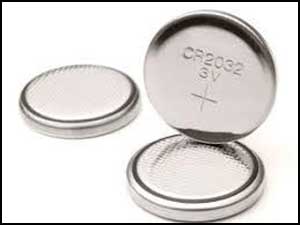- Home
- Editorial
- News
- Practice Guidelines
- Anesthesiology Guidelines
- Cancer Guidelines
- Cardiac Sciences Guidelines
- Critical Care Guidelines
- Dentistry Guidelines
- Dermatology Guidelines
- Diabetes and Endo Guidelines
- Diagnostics Guidelines
- ENT Guidelines
- Featured Practice Guidelines
- Gastroenterology Guidelines
- Geriatrics Guidelines
- Medicine Guidelines
- Nephrology Guidelines
- Neurosciences Guidelines
- Obs and Gynae Guidelines
- Ophthalmology Guidelines
- Orthopaedics Guidelines
- Paediatrics Guidelines
- Psychiatry Guidelines
- Pulmonology Guidelines
- Radiology Guidelines
- Surgery Guidelines
- Urology Guidelines
Honey + Sucralfate reduce esophageal injury after accidental button battery ingestion

Early and frequent ingestion of Honey and Sucralfate has the potential to reduce esophageal injury after accidental ingestion of button battery, according to a study published in the journal The Laryngoscope.
It is common that children have the habit of swallowing the things accessible to them. One of the things they often ingest is the battery button used commonly in watches, calculators, toys and other electronic devices but this may lead to serious consequences of esophageal damage. The new study suggests that children who ingest small portable electronics batteries can be saved from serious injury by the ingestion of honey.
Rachel R. Anfang and his associates conducted a study to find out the efficacy of common weakly acidic household beverages, viscous liquids, and Carafate® (Sucralfate) to act as protective esophageal irrigations until endoscopic removal of the Button Battery (BB).
The researchers screened Apple juice, orange juice, Gatorade®, POWERADE®, pure honey, pure maple syrup, and Carafate® were screened using a 3 V lithium (3 V‐CR2032) Button Battery on the cadaveric porcine esophagus. The most promising in vitro options were tested against a saline control in live American Yorkshire piglets with the anode‐facing placement of the BB on the posterior wall of the proximal esophagus for 60 minutes. BB voltage and tissue pH were measured before battery placement and after removal.
The 10 mL irrigations occurred every 10 minutes from t = 5 minutes. Gross and histologic assessment were performed on the esophagus of piglets euthanized 7 ± 0.5 days following BB exposure.
The study found that honey and Carafate® significantly demonstrated to the most protective effects in vitro and in vivo. Both neutralized the tissue pH increase and created more localized and superficial injuries.
The researchers noted that in vivo was a decrease in both full‐thickness injuries (i.e., shallower depths of necrotic and granulation tissue) and outward extension of injury in the deep muscle beyond surface ulcer margins.
The study concluded that in the crucial period between BB ingestion and endoscopic removal, early and frequent ingestion of honey in the household setting and Sucralfate in the clinical setting has the potential to reduce injury severity and improve patient outcomes.
For more information log on to https://doi.org/10.1002/lary.27312

Disclaimer: This site is primarily intended for healthcare professionals. Any content/information on this website does not replace the advice of medical and/or health professionals and should not be construed as medical/diagnostic advice/endorsement or prescription. Use of this site is subject to our terms of use, privacy policy, advertisement policy. © 2020 Minerva Medical Treatment Pvt Ltd